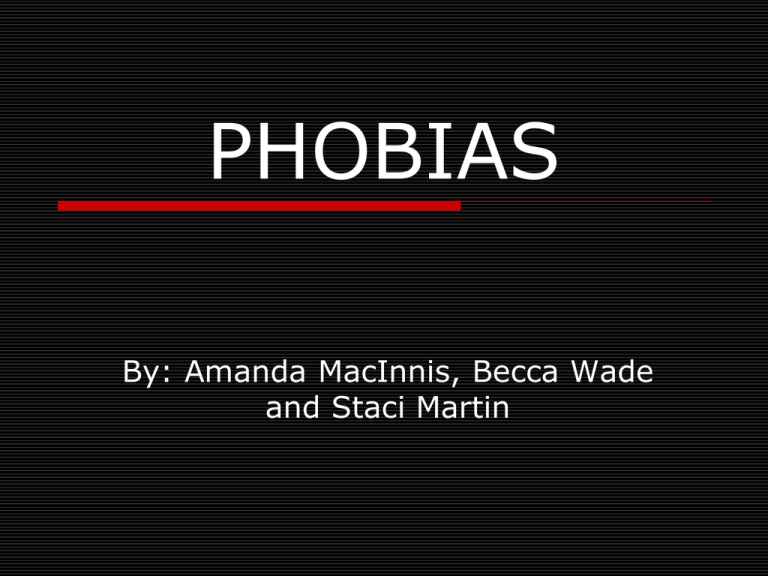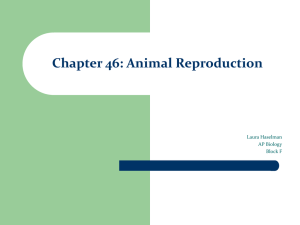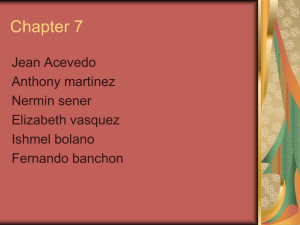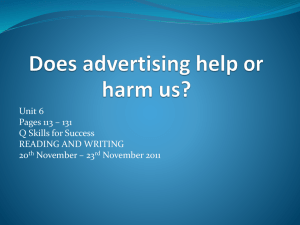PHOBIAS
advertisement

PHOBIAS By: Amanda MacInnis, Becca Wade and Staci Martin A phobia is a situation of fear during an activity, or thing that causes the person to want to avoid it. http://www.coolquiz.com/trivia/didyouknow/images/phobias.gi f THERE ARE THREE TYPES OF PHOBIAS: 1. Specific Phobias 2. Social Phobias 3. Agoraphobias http://www.google.ca/images?hl=en&sou rce=imghp&biw=1020&bih=564&q=specif ic+phobia&gbv=2&aq=f&aqi=g1&aql=&o q=&gs_rfai= SPECIFIC PHOBIA Extreme fear of a specific living thing, object or situation. CRITERIA http://www.google.ca/images?hl=en&bi w=1020&bih=564&gbv=2&tbs=isch%3 A1&sa=1&q=phobia+person&aq=f&aqi =&aql=&oq=&gs_rfai= Individual experiences excessive and persistent fear of a specific object or situation and has feelings of anxiety, fear, or panic right when encountering it The person knows that their reaction of fear is unreasonable Individual’s fear, anxiety, or avoidance causes significant distress or it interferes with the person’s day to day life In children younger than 18 years old, the problem must be present for at least six months before diagnosing a specific phobia The person’s fear, panic, and avoidance aren’t better explained by another disorder http://www.google.ca/imgres?imgurl=http://static.howstuffwork s.com/gif/virtual-medicine1.jpg&imgrefurl=http://health.howstuffworks.com/medicine/mo dern/virtualmedicine1.htm&usg=__kzFIBVMm6HOZYXtdB3buXg9bRCw=&h =300&w=400&sz=22&hl=en&start=0&zoom=1&tbnid=daenXze zthToM:&tbnh=152&tbnw=203&prev=/images%3Fq%3Dfear%2B of%2Bheights%26hl%3Den%26biw%3D1276%26bih%3D605% 26gbv%3D2%26tbs%3Disch:1&itbs=1&iact=hc&vpx=425&vpy =120&dur=374&hovh=194&hovw=259&tx=167&ty=106&ei=AH MBTcaiLMG28QODhPCbCA&oei=AHMBTcaiLMG28QODhPCbCA&e sq=1&page=1&ndsp=20&ved=1t:429,r:2,s:0 TYPES http://www.google.ca/imgres?imgurl=http://www.rubbe rball.com/RBImages/v021/wm/a01581.jpg&imgrefurl=h ttp://www.rubberball.com/search_detail.php%3Fid%3D a01581&usg=__AtHcUIl8K3RAH_9YbJiadwvyCk=&h=433&w=326&sz=22&hl=en&start=215&zoom=1 &tbnid=-ntojLj4ETMEM:&tbnh=139&tbnw=108&prev=/images%3Fq% 3Danimal%2Bphobia%26hl%3Den%26biw%3D1276%2 6bih%3D605%26gbv%3D2%26tbs%3Disch:1&itbs=1&i act=rc&dur=359&ei=jnEBTff7N8aX8QOLooWbCA&oei= W3EBTYyEJsGk8QOw5dmcCA&esq=12&page=12&ndsp= 18&ved=1t:429,r:0,s:215&tx=62&ty=56 Animal- fear of animals Natural Environment- fear of heights, storms and being near water Blood-Injection/Injury- fear of seeing blood, having a blood test or injection, watching medical procedures Situational- driving, flying, elevators, and enclosed places h Other- other specific fears http://www.google.ca/imgres?imgurl=http://www.szwholesale.com/uploadFiles/upimg0%255CEmulational-Plane-Model-MD11_23220.jpg&imgrefurl=http://www.sz-wholesale.com/shenzhen_China_products/Emulational-PlaneModel_1.htm&usg=__ubi8umlJ18c9fmWfnQs6Kp9evg=&h=1666&w=2272&sz=235&hl=en&start=0&zoom=1&tbnid=7c9r6V0NOcD8M:&tbnh=136&tbnw=178&prev=/images%3Fq%3Dplane%26hl%3Den%26biw%3D1276% 26bih%3D605%26gbv%3D2%26tbs%3Disch:1&itbs=1&iact=hc&vpx=971&vpy=113&dur=312&hovh= 192&hovw=262&tx=215&ty=90&ei=eXUBTfuPJ4Xr4AbAlbHYBQ&oei=I3UBTdi4OIit8gO6nicCA&esq=9&page=1&ndsp=18&ved=1t:429,r:5,s:0 ttp://www.google.ca/imgres?imgurl=http://2.bp.blogspot .com/_vpbpDOFCMgo/SYxX7ZNWgcI/AAAAAAAAAqg/Rwp0E LNOAkw/s400/cartoon%2Bneedle.jpg&imgrefurl=http://disa blednotdeadanne3.blogspot.com/2009_02_01_archive.html&usg=__Zm 8c7pVHVJ_ihTW849bwuWjul0k=&h=339&w=350&sz=14&hl =en&start=0&zoom=1&tbnid=B9Nyp0Uuo7WS7M:&tbnh=1 39&tbnw=144&prev=/images%3Fq%3Dcartoon%2Bneedle %26hl%3Den%26biw%3D1276%26bih%3D605%26gbv%3 D2%26tbs%3Disch:1&itbs=1&iact=hc&vpx=230&vpy=100& dur=577&hovh=221&hovw=228&tx=129&ty=119&ei=B3Q BTaHuNdKu8QOXhNSbCA&oei=B3QBTaHuNdKu8QOXhNSbC A&esq=1&page=1&ndsp=23&ved=1t:429,r:1,s:0 CAUSES LEARNING HISTORY Direct learning experiences- can begin following a traumatic experience Observational learning experiences- learn to fear a situation by watching others show signs of a fear in the same situation Informational Learning- learning to fear an object or situation by hearing or reading that the situation is dangerous http://www.google.ca/imgres?imgurl=http://itsourblog.typepad.com/.a/6a00e5512b 136188330105366c4088970c800wi&imgrefurl=http://www.takerootandwrite.com/columns-abuse-trauma-hopehealing/index.html&usg=__85VAmQMYAWRp4jwwHEZ5W4ddbVs=&h=331&w=435& sz=111&hl=en&start=74&zoom=1&tbnid=owUSPKFLxuzXnM:&tbnh=137&tbnw=194 &prev=/images%3Fq%3Dtrauma%26hl%3Den%26biw%3D1276%26bih%3D605%2 6gbv%3D2%26tbs%3Disch:10%2C1835&itbs=1&ei=qHYBTZCYCtLT4gb7tKXTBQ&bi w=1276&bih=605&iact=rc&dur=327&oei=gXYBTdpdjKjxA5zq9ZsI&esq=5&page=5& ndsp=19&ved=1t:429,r:1,s:74&tx=86&ty=49 ATTENTION AND MEMORY People with specific phobias tend to pay more attention to threatening information that relates to the fear Also tend to have distortions in their memories for encounters of fear http://www.google.ca/imgres?imgurl=http://us.123rf.com/400wm/400/4 00/stockbroker/stockbroker0806/stockbroker080604861/3205291students-in-class-paying-attention-and-taking-notes-selectivefocus.jpg&imgrefurl=http://www.123rf.com/photo_3205291_students-inclass-paying-attention-and-taking-notes-selectivefocus.html&usg=__xOZPS4BX6jYC_7WRvqIo_uu5y2I=&h=267&w=400&s z=22&hl=en&start=21&zoom=1&tbnid=Kg0z_QporAylM:&tbnh=144&tbnw=192&prev=/images%3Fq%3Dpaying%2Battention %26hl%3Den%26biw%3D1276%26bih%3D605%26gbv%3D2%26tbs%3 Disch:10%2C600&itbs=1&iact=hc&vpx=792&vpy=152&dur=2465&hovh= 183&hovw=275&tx=146&ty=120&ei=pending&oei=LncBTZryPNS38QOgw fGbCA&esq=2&page=2&ndsp=18&ved=1t:429,r:10,s:21&biw=1276&bih =605 BELEIFS AND INTERPRETATIONS People with specific phobias tend to hold beliefs and to interpret situations in a way that increases anxiety http://www.google.ca/imgres?imgurl=http://alleviateanxietystress.com/blog/wpcontent/uploads/2010/03/anxiety2.jpg&imgrefurl=http://alleviateanxietystress.com/ blog/&usg=__MJiSgNz8bLIzwNpqxSL9Q5WMg08=&h=506&w=337&sz=56&hl=en&st art=21&zoom=1&tbnid=a76JvDqVUbuILM:&tbnh=140&tbnw=98&prev=/images%3F q%3Danxiety%26hl%3Den%26biw%3D1276%26bih%3D605%26gbv%3D2%26tbs %3Disch:10%2C425&itbs=1&iact=hc&vpx=778&vpy=138&dur=15&hovh=275&hov w=183&tx=130&ty=145&ei=wncBTcW_NeiU4gb2tumlBQ&oei=uXcBTffDHNCs8QONk aybCA&esq=2&page=2&ndsp=21&ved=1t:429,r:4,s:21&biw=1276&bih=605 AVOIDANCE AND OTHER BEHAVIORS Avoidance of fear prevents people with specific phobias from learning that the situations they fear are not as “dangerous” as they think it is http://www.google.ca/imgres?imgurl=http://kai-zen.net/blog/wpcontent/uploads/2010/06/danger-sign.jpg&imgrefurl=http://kaizen.net/blog/%3Fcat%3D13&usg=__BEugbroJlpxJx_zW8id4AyEPv5I=&h=446&w=4 40&sz=36&hl=en&start=34&zoom=1&tbnid=4pEMC05GwOVhOM:&tbnh=134&tbnw =133&prev=/images%3Fq%3Dnot%2Bdangerous%2Bsign%26hl%3Den%26biw%3 D1276%26bih%3D605%26gbv%3D2%26tbs%3Disch:1&itbs=1&iact=rc&dur=297&e i=g3gBTYezIc6J4QbHubWgBQ&oei=angBTcCvOcij8QOQ2dCaCA&esq=6&page=3&nds p=18&ved=1t:429,r:17,s:34&tx=79&ty=53 BIOLOGICAL Sometimes a phobia may run in the family and genetics may play a role When exposed to fear biological changes occur in the body and these can increase physical symptoms http://www.google.ca/imgres?imgurl=http://www.biophage.com/wp -content/uploads/2010/04/GeneticResearch.jpg&imgrefurl=http://www.biophage.com/geneticengineering.html&usg=__8KE6jR9ZdhltGBPH723RG_QueHo=&h=32 0&w=400&sz=14&hl=en&start=19&zoom=1&tbnid=IH1QkHH7cT5x KM:&tbnh=140&tbnw=175&prev=/images%3Fq%3Dgenetics%26hl %3Den%26biw%3D1276%26bih%3D605%26gbv%3D2%26tbs%3 Disch:10%2C394&itbs=1&iact=hc&vpx=772&vpy=203&dur=827&h ovh=201&hovw=251&tx=99&ty=122&ei=CXoBTYWoOKeG4gbA9_C 8BQ&oei=73kBTaSlLNOy8QPZ_sCaCA&esq=2&page=2&ndsp=22&v ed=1t:429,r:4,s:19&biw=1276&bih=605 TREATMENTS EXPOSURE TO FEARED SITUATIONS Confronting a feared situation repeatedly, until the situation no longer triggers fear this technique http://www.google.ca/imgres?imgurl=http://www.newageselfhelp.com/wpcontent/uploads/2009/05/confrontation300x265.gif&imgrefurl=http://www.newageselfhelp.com/main/do-conflicts-andconfrontations-have-you-turn-and-run-for-the-hills&usg=__5j6LvrXDV3NSlbiEkxp5USP8tE=&h=265&w=300&sz=22&hl=en&start=185&zoom=1& tbnid=fQvuU8lNXZQGgM:&tbnh=141&tbnw=160&prev=/images%3Fq%3Dconfr ontation%26hl%3Den%26biw%3D1276%26bih%3D605%26gbv%3D2%26tbs %3Disch:10%2C5084&itbs=1&iact=hc&vpx=327&vpy=219&dur=94&hovh=211 &hovw=239&tx=153&ty=150&ei=GnwBTaTeAqLVnAebp8XlDQ&oei=uHsBTaSTK Iql8QOfifGbCA&esq=5&page=11&ndsp=19&ved=1t:429,r:13,s:185&biw=1276 &bih=605 APPLIED MUSCLE TENSION This technique is used specifically to treat people with blood and needle phobias Combines exposure to blood and needles with exercises that involve tensing all of the muscles of the body Temporarily raises the person’s blood pressure and prevents fainting COGNITIVE THERAPY Learning to identify one’s anxious thoughts and to replace them with more realistic thoughts http://www.google.ca/imgres?imgurl=http://lancashirecare.files.wordpress.com/200 8/03/cbt.jpg&imgrefurl=http://lancashirecare.wordpress.com/2008/03/25/top-10most-read-article-from-cognitive-psychotherapy-cognitive-behaviour-therapy-forpeople-with-asperger-syndrome/&usg=__LKF8JHAhFV_YMM7S59K2b8Xvm4=&h=270&w=275&sz=27&hl=en&start=19&zoom=1&tbnid=gGX 1SR893ti1yM:&tbnh=134&tbnw=132&prev=/images%3Fq%3Dcognitive%2Btherapy %26hl%3Den%26biw%3D1276%26bih%3D605%26gbv%3D2%26tbs%3Disch:1&it bs=1&iact=rc&dur=250&ei=6XwBTaqNNIP54AavnamzBQ&oei=1nwBTYKKFMir8QP71 -ybCA&esq=2&page=2&ndsp=21&ved=1t:429,r:4,s:19&tx=45&ty=112 BIOLOGICAL THERAPY Selective serotonin reuptake inhibitors, such as paroxetine (Paxil) and similar medications Anti-anxiety medications such as diazepam (Valium) and related drugs http://www.google.ca/imgres?imgurl=http://bayazidt.files.wordpress.com/2008/11/ pill_bottle_and_pills1.jpg&imgrefurl=http://bayazidt.wordpress.com/com-597theories-and-practice-of-interactivity/pill-bottle-cap-designs/&usg=__NXwxDjNEpmT8dp_UswfUcqQPq8=&h=565&w=849&sz=410&hl=en&start=0&zoom=1&tbnid=cwKlZJ0Fd518M:&tbnh=135&tbnw=183&prev=/images%3Fq%3Dpills%26hl%3Den %26biw%3D1276%26bih%3D605%26gbv%3D2%26tbs%3Disch:1&itbs=1&iact=rc& dur=359&ei=yH0BTe2lI9DWnAfk9IXnAQ&oei=sn0BTbvXCIOb8QP2ImbCA&esq=6&page=1&ndsp=18&ved=1t:429,r:0,s:0&tx=165&ty=64 SOCIAL PHOBIAS http://www.google.ca/imgres?imgurl=http://parentingteens.com/blog/wpcontent/uploads/socialphobia.jpg&imgrefurl=http://parentingteens.com/blog/2010/10/28/dealing-withsocialphobia/&usg=__e3bxcpoyz7KthJWDX3irDn3ZEVU=&h=347&w=520&sz=26&hl=en&s tart=0&zoom=1&tbnid=oiCjNm3s7myDlM:&tbnh=138&tbnw=184&prev=/images%3 Fq%3Dsocial%2Bphobia%26hl%3Den%26biw%3D1276%26bih%3D605%26gbv%3 D2%26tbs%3Disch:1&itbs=1&iact=hc&vpx=384&vpy=119&dur=1061&hovh=183&h ovw=275&tx=123&ty=120&ei=Vn4BTfyFG8uw8QOLqNGbCA&oei=Vn4BTfyFG8uw8Q OLqNGbCA&esq=1&page=1&ndsp=19&ved=1t:429,r:2,s:0 Individuals with social phobia are very fearful of being in a performance or social situations. The anxiety they get is either due to the feelings of being judged by others or behaving in a way that could cause embarrassment. CAUSES HEREDITY In many cases the individual’s parents have social phobia, which results in their children having it as well due to their genetics ENVRIONMENTAL When children live in certain types of environments, they are effected and behaviors can change http://www.google.ca/imgres?imgurl=http://www.socialsecurityinsider.com/wpcontent/uploads/2008/11/istock_000004250579xsmall.jpg&imgrefurl=http://www.s ocialsecurityinsider.com/2008/05/is-social-phobia-adisability/&usg=__BwarDaOlxIIijU_2nAZjF8QlL8g=&h=300&w=400&sz=181&hl=en& start=19&zoom=1&tbnid=KevuDfGd11ngIM:&tbnh=140&tbnw=217&prev=/images %3Fq%3Dsocial%2Bphobia%26hl%3Den%26biw%3D1276%26bih%3D605%26gbv %3D2%26tbs%3Disch:1&itbs=1&iact=rc&dur=375&ei=c38BTbzhMM6v8QOGlvSaCA &oei=Vn4BTfyFG8uw8QOLqNGbCA&esq=2&page=2&ndsp=19&ved=1t:429,r:8,s:19 &tx=148&ty=35 NEUROLOGICAL A chemical unbalance can occur within the brain which causes a social phobia The imbalance of serotonin in the brain cells can cause social situations can be seen very frightening for the individual http://www.google.ca/imgres?imgurl=http://images.lifescript.com/images/ebsco/ima ges/Child_brain.jpg&imgrefurl=http://www.lifescript.com/Health/A-Z/Conditions_AZ/Conditions/A/Attention_Deficit_Hyperactivity_Disorder_and_Attention_Deficit_Diso rder_A.aspx&usg=__W93-SptKP2RBTdat4A6DMQIw3I=&h=396&w=400&sz=120&hl=en&start=0&zoom=1&tbn id=5lq1GTPAcyYTM:&tbnh=148&tbnw=150&prev=/images%3Fq%3Dchemical%2Bbrain%2Bimbal ance%26hl%3Den%26biw%3D1276%26bih%3D605%26gbv%3D2%26tbs%3Disch: 1&itbs=1&iact=rc&dur=359&ei=538BTaOHKYGu8QOu5aykCA&oei=1H8BTdfoKYSi8Q P9-_CcCA&esq=8&page=1&ndsp=19&ved=1t:429,r:1,s:0&tx=82&ty=63 SYMPTOMS PHYSICAL Blushing Shaky voice and trembling of hands and feet Sweaty or cold hands Panic attacks Muscular tension Diarrhea Confusion Difficulty making eye contact COGNITIVE Fear of being judged or criticized Anxiety or fear of having attention put on you The belief that others see you as anxious, weak, crazy or stupid Fear of meeting strangers Fear of authority figures PERSONALITY TRAITS Low self-confidence and self-esteem Negative thought patterns Undeveloped social skills TREATMENTS MEDICINES Paroxetine Sertraline Fluvoxamine Fluoxetine http://www.google.ca/imgres?imgurl=http://www.istockphoto.com/file_thumbview_ approve/4407317/2/istockphoto_4407317-medicine-cabineticon.jpg&imgrefurl=http://www.istockphoto.com/stock-illustration-4407317medicine-cabineticon.php&usg=__IIdSMS_Y_XUTB9UNMynG08J0Pkg=&h=371&w=380&sz=54&hl=en &start=21&zoom=1&tbnid=j7GpE4ndPV2TIM:&tbnh=146&tbnw=150&prev=/images %3Fq%3Dmedicine%26hl%3Den%26biw%3D1276%26bih%3D605%26gbv%3D2% 26tbs%3Disch:1&itbs=1&iact=rc&dur=656&ei=XoABTYLNMH54gaHi4n_BA&oei=RIABTfHiMcak8QOumOSdCA&esq=7&page=2&ndsp=21&ved =1t:429,r:18,s:21&tx=50&ty=30 THERAPIES Two Types: Group and Private By taking therapies the person will be able to learn to face social situations and key ways on how to stop avoiding them Learn different exercises you can do to control you symptoms ANALYZING NEGATIVE THOUGHTS A major symptom of someone with a social phobia is having anxiety caused by negative thoughts Individual has to ask themselves why they would be so scared to do certain things AGORAPHOBIA AGORAPHOBIA Is the fear of being outside or being in a situation, which one either cannot escape from, or escaping would be difficult or humiliating. http://www.google.ca/imgres?imgurl=http://www.anxietyhelp.org.uk/wpcontent/uploads/panic-agoraphobia150x150.jpg&imgrefurl=http://www.anxietyhelp.org.uk/agoraphobia-agora-phobiafear-of-beingoutside.html&usg=__LleKKY6ETdODS2PxExPSbE2NQrs=&h=150&w=150&sz=8&hl= en&start=0&zoom=1&tbnid=K7LBqOY0R7ZnM:&tbnh=120&tbnw=120&prev=/images%3Fq%3Dfear%2Bof%2Bbeing%2 Boutside%26hl%3Den%26biw%3D1276%26bih%3D605%26gbv%3D2%26tbs%3Di sch:1&itbs=1&iact=rc&dur=187&ei=RoEBTYbgLseV8QPHrMSdCA&oei=RoEBTYbgLse V8QPHrMSdCA&esq=1&page=1&ndsp=19&ved=1t:429,r:5,s:0&tx=97&ty=55 CHARACTERISTICS OF AGORAPHOBIA CHARACTERISTICS There are two characteristics that are associated with this phobia: 1) Anxiety: it starts to develop for people with agoraphobia when they start to think about being in a situation out of their comfort zone. 2) Panic: When people avoid these situations it brings them to panic and anxiety. HOW AGORAPHOBIA IS DIAGONOSED A mental health professional diagnosis’ agoraphobia by taking a personal history from the client/patient. No physical conditions that can be met to determine if someone has agoraphobia. TREATMENT There are three ways Agoraphobia is treated: 1) Therapy 2) Medication 3) Both therapy and medication combined http://www.google.ca/imgres?imgurl=http://www.bloodpressurereading.net/images/ blood-pressuremedication.png&imgrefurl=http://www.bloodpressurereading.net/&usg=__dTgbIDrfq 4vKe37fCFoJAXm5sAo=&h=310&w=460&sz=81&hl=en&start=0&zoom=1&tbnid=IB al7Exa9sOEM:&tbnh=145&tbnw=201&prev=/images%3Fq%3Dmedication%26hl%3Den %26biw%3D1276%26bih%3D605%26gbv%3D2%26tbs%3Disch:1&itbs=1&iact=hc &vpx=131&vpy=122&dur=1856&hovh=184&hovw=274&tx=124&ty=89&ei=5IEBTa LNCtLB8QOp4ryaCA&oei=5IEBTaLNCtLB8QOp4ryaCA&esq=1&page=1&ndsp=18&ved =1t:429,r:0,s:0 SOURCES http://www.mayoclinic.com/health/social-anxiety http://apt.rcpsych.org/cgi/reprint/9/4/258.pdf http://www.mentalhealth.com/rx/p23-an03.html http://www.socialphobiaworld.com/social-phobiasymptoms-16960/ http://www.facebook.com/l.php?u=http%3A%2F%2Fhelpg uide.org%2Fmental%2Fsocial_anxiety_support_symptom_c auses_treatment.htm&h=75c49CWs1Xv8IaAgvRAbjH835Ig http://www.socialanxietysupport.com/disorder/ http://kidshealth.org/teen/your_mind/mental_health/social _phobia.html# http://www.socialphobia.org/whatis.html#whatis1 http://www.medicinenet.com/agoraphobia/article.htm http://www.athealth.com/Consumer/disorders/Agorap hobia.html http://www.books.google.ca%2Fbooks%3Fid%3DsZQ oPHyEJoC%26pg%3DPA65%26lpg%3DPA65%26dq% 3Dagoraphobia%2Brates%2Bin%2Bcanada%26source %3Dbl%26ots%3D2Jzq5pczC_%26sig%3DQhR66zC2 c07gniHnGSmq5L8gEWQ%26hl%3Den%26ei%3DJ23 2TIeJHYWPnwfUrNmjCQ%26sa%3DX%26oi%3Dbook _result%26ct%3Dresult%26resnum%3D8%26ved%3 D0CDgQ6AEwBw&h=75c49V7W2i4SE6hpmyGWnr9Vw hQ# http://www.videomd.com/Phobias-fv-2165.aspx http://anxiety.stjoes.ca/specificP.htm











